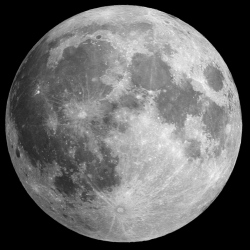
The Moon may have been formed by a collision between Earth and an object that was strikingly similar in composition to our own planet. This could help resolve why Earth and Moon rocks are much more similar than we would expect from this "giant impact hypothesis". The study is one of three published in the prestigious journal Nature.
Two further research papers in the issue report subtle, previously unseen differences in lunar rocks. Scientists say they paint a consistent – and much clearer – picture of our moon’s history. The modelling study, done by researchers from Israel and France, precisely simulates the turmoil of the early, inner Solar System and quantifies the variety of collisions that might have occurred.
In its early stages, the proto-Earth would have been subjected to a string of brutal collisions with other wannabe planets. According to our best understanding, the last of these was a cataclysmic tangle with a planetary body just ten times lighter than Earth, and the resulting debris eventually clumped together to make the Moon.
The problem is that most of what became the Moon should have come from the imposter, and based on our existing knowledge of what was flying where at that time, that imposter was thought to be a very different type of planet.
"So if the impactor had a different composition from the Earth, we should expect the Moon to have a different composition," Dr Hagai Perets, one of the study’s authors, told the Nature podcast. But this is not the case.
"They are almost identical. This is one of the major challenges for this really beautiful giant impact hypothesis," said Dr Perets, from the Technion-Israel Institute of Technology.
